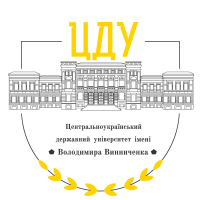VERBALIZATION OF PHRASEOLOGISMS WITH ANTHROPIC COMPONENT TO INDICATE HUMAN AGE IN EAST SLAVIC AND WEST GERMAN LANGUAGES
DOI:
https://doi.org/10.32782/2522-4077-2024-208-56Keywords:
phraseological unit, «human age», anthropic component, concept, linguocultural studiesAbstract
The article highlights the results of scientific research on the functioning of phraseological units with an anthropic component to indicate the age of a person in East Slavic and West Germanic languages. Age is considered as the main concept of the temporal structure of the personality, it comes from time and is one of the bases of its reflection. It is emphasized that the concept «human age» as a multifaceted systemic phenomenon reflects the interrelationship of biological constants and the socio-historical environment. It was found that phraseological units name the age, representing a person by age characteristics due to typical life situations. In this connection the following classification of phraseological units for indicating the age of a person is presented: 1) prenatal period; 2) childhood; 3) adolescence and youth; 4) early and middle adulthood; 5) late adult period; 6) death. The material of the study was phraseological units used to indicate the age of a person, from the English, German and Ukrainian lexicographic sources. During the research was established that these phraseological units in the three languages have both common and distinctive features. Empirical material of the study made it possible to single out the following common features of phraseological units with an age component: 1) the semantics of the prenatal period and death are presented in the English and German languages; 2) phraseological units in the English and Ukrainian languages with the meaning of differences in the people’ outlook of different ages are singled out. Distinctive features in which the use of phraseological units is characteristic of only one language are: phraseological units to denote the smallest child in the family in particular, and naughty children in general, children’s upbringing in the family, as well as phraseological units to denote the problems of early and middle adulthood period.
References
Бігун В. П. Семантичний обсяг корелятів вік та age в українській та англійській мовах. Мова і культура. 2013. Вип. 16, т. 4. С. 383–389.
Галапчук О. М. Вікова диференціація стратегій і тактик дискурсу в сучасній англійській мові : дис. ... канд. філол. наук. Х., 2000. 197 с.
Голубовська І. О. Етнічні особливості мовних картин світу : монографія. К.: Київський університет, 2002. 293 с.
Зорівчак Р. П. До методології вивчення фразеологічних одиниць у контрастивних дослідженнях. Нариси з контрастивної лінгвістики. Київ: Наукова думка, 1979. С. 59–65.
Корольова А. В. Нові виклики сьогоденної компаративістики і контрастивістики. Проблеми зіставної семантики: зб. наук. статей / відп. ред. А. В. Корольова. К.: Вид. центр КНЛУ, 2013. Вип. 11. С. 9–15.
Мізін К. І. Людина в дзеркалі компаративної фразеології: монографія. Кременчук: Щербатих О. В., 2011. 448 с.
Орлова Ю. B. Мотивуючі ознаки концепту «вік людини» (на матеріалі української, російської та англійської мов). Актуальні проблеми іноземної філології: лінгвістика та літературознавство. Бердянськ, 2009. Вип. 3. С. 110–116.
Проценко І. Ю. Структурно-семантична характеристика лексики на позначення віку людини в іспанській та українській мовах : автореф. дис. ... канд. філол. наук. Донецьк, 2010. 20 c.
Ткаченко О. Б. Мова і національна ментальність (Спроба сучасного синтезу). К. : Грамота, 2006. 240 с.
Шутова М.О. Етнокультурні стереотипи в англійській та українській мовах: реконструкція та типологія: дис. ... док. філ. наук. Київ, 2016. 433 с.
Bąba S. Innowacje frazeologiczne współczesnej polszczyzny. Poznań: Wydawnictwo Naukowe Uniwersytetu im. Adama Mickiewicza, 1989. 215 s.
Craig Grace J., Baucum Don. Human Development. Prentice Hall, 2001. 718 p.
Croft W. Cognitive Linguistics. Cambridge: Cambridge University Press, 2004. 356 p.
Wierzbicka A. Cross-Cultural Pragmatics. The Semantics of Human Interaction. Berlin – New York : Mouton de Gruyter, 1999. 502 p.
Wierzbicka A. Lingua Mentalis. Sydney etc., 1980. 367 p.
Wolny M. Językowy obraz starości ludzi i zwierząt w polszczyźnie. Język a kultura. Wrocław, 2003. T. 15. S. 189–199.








